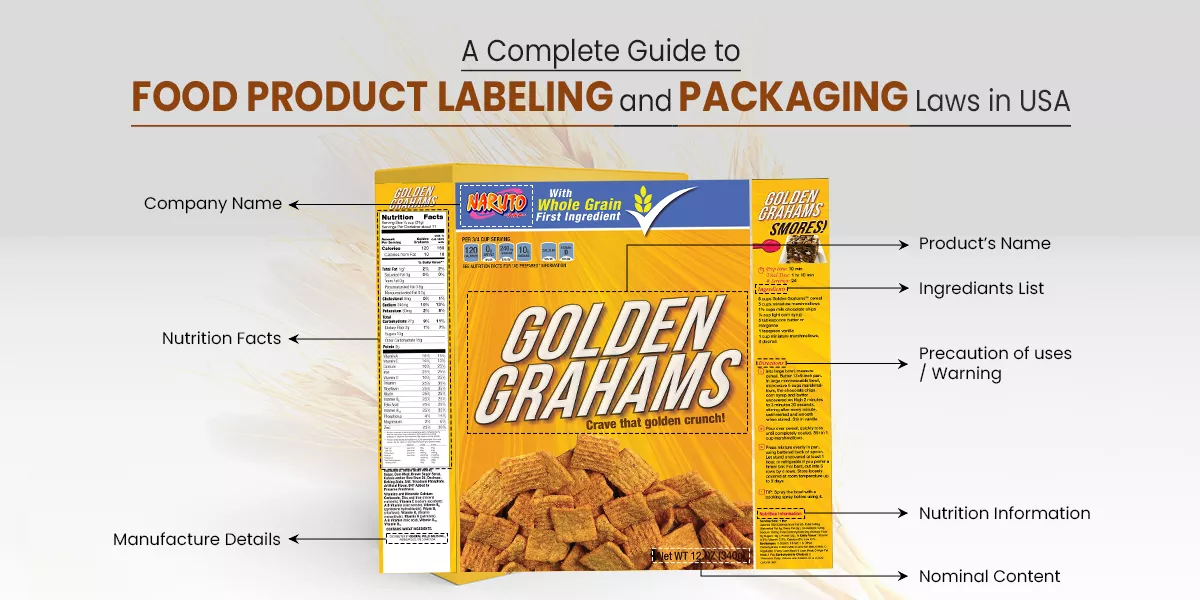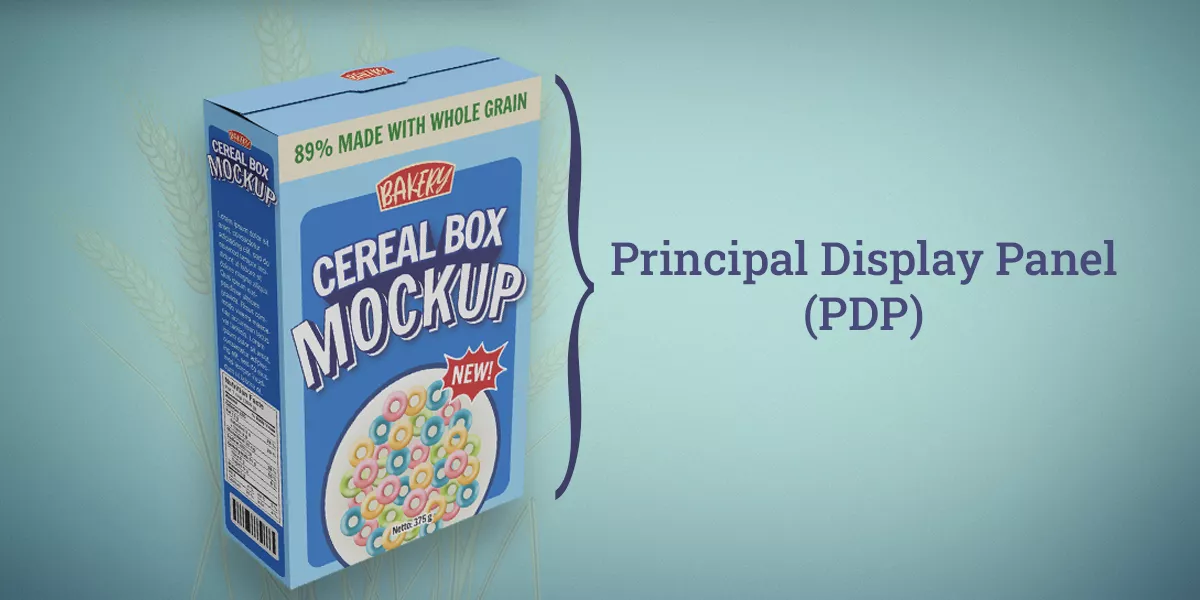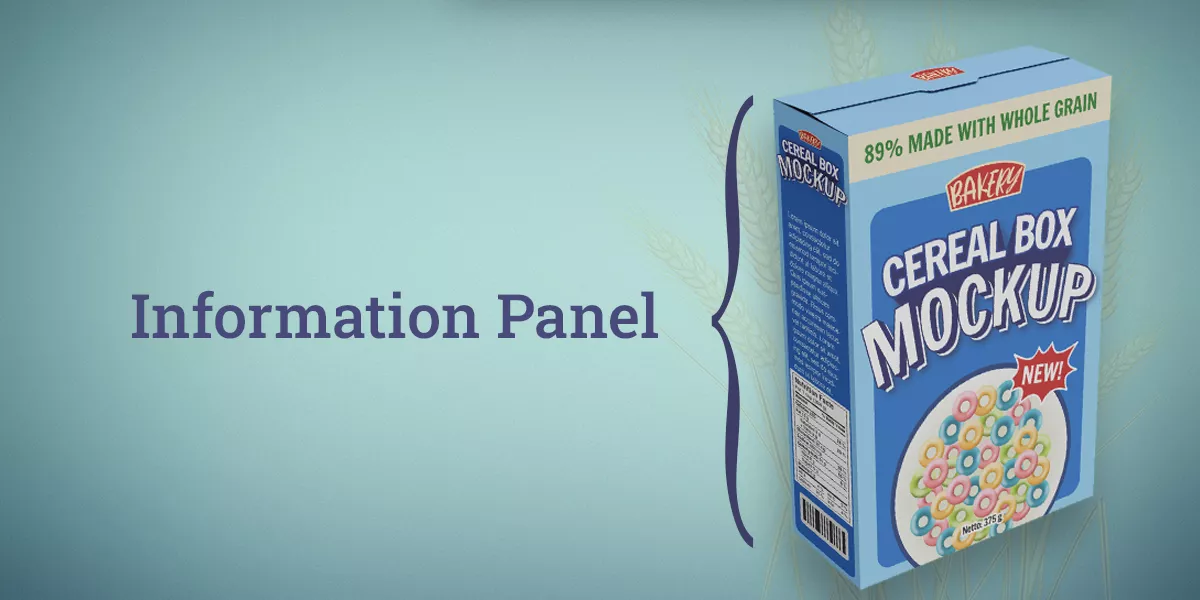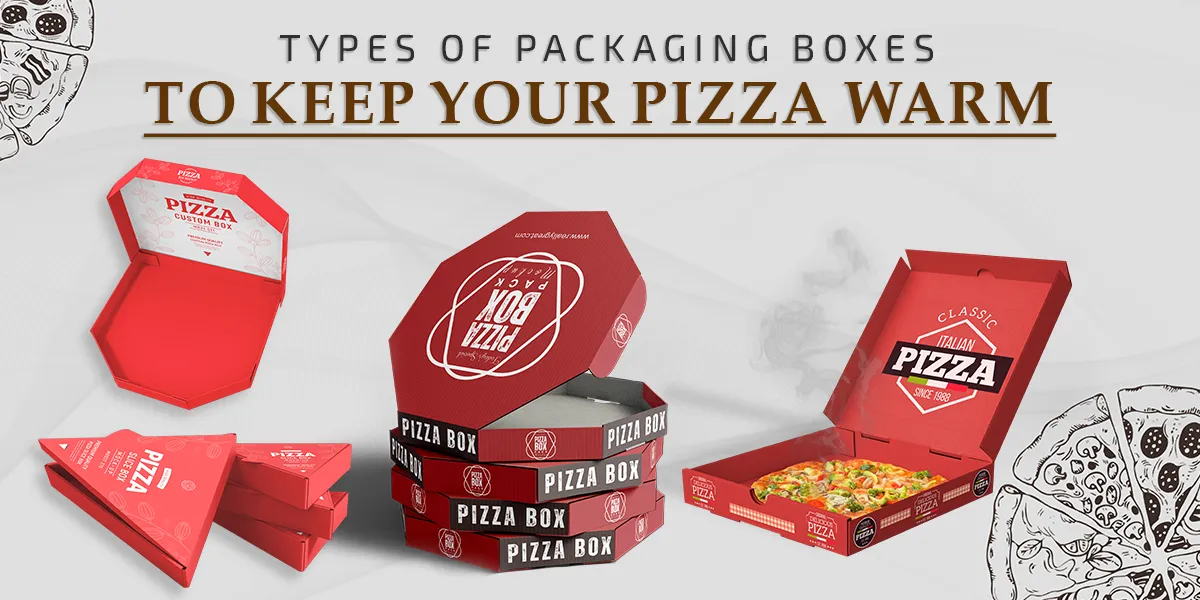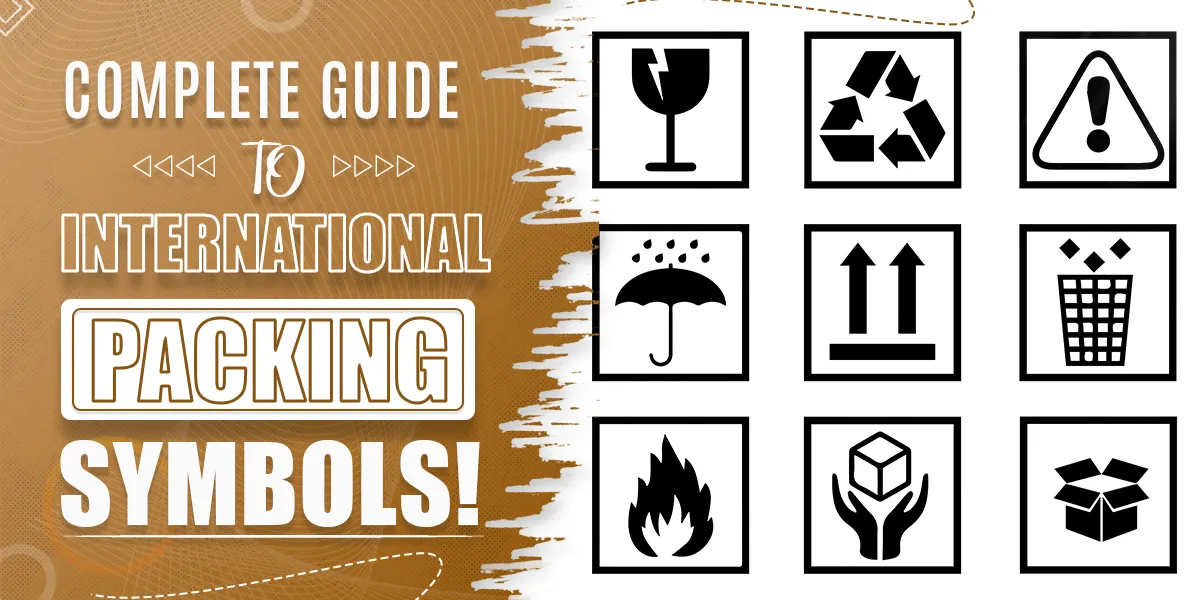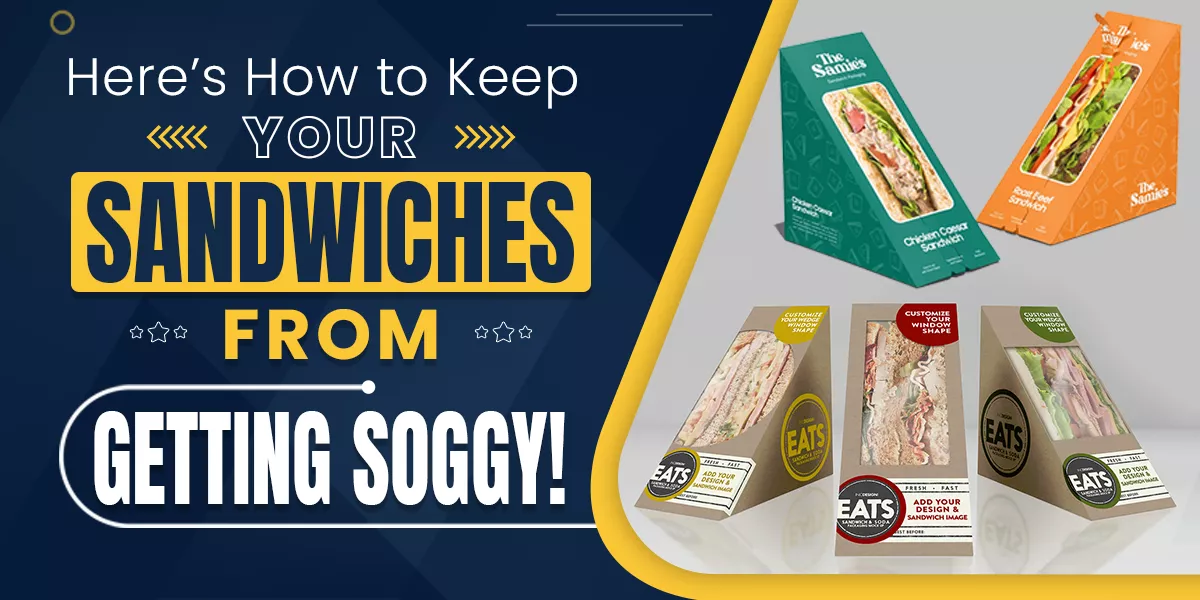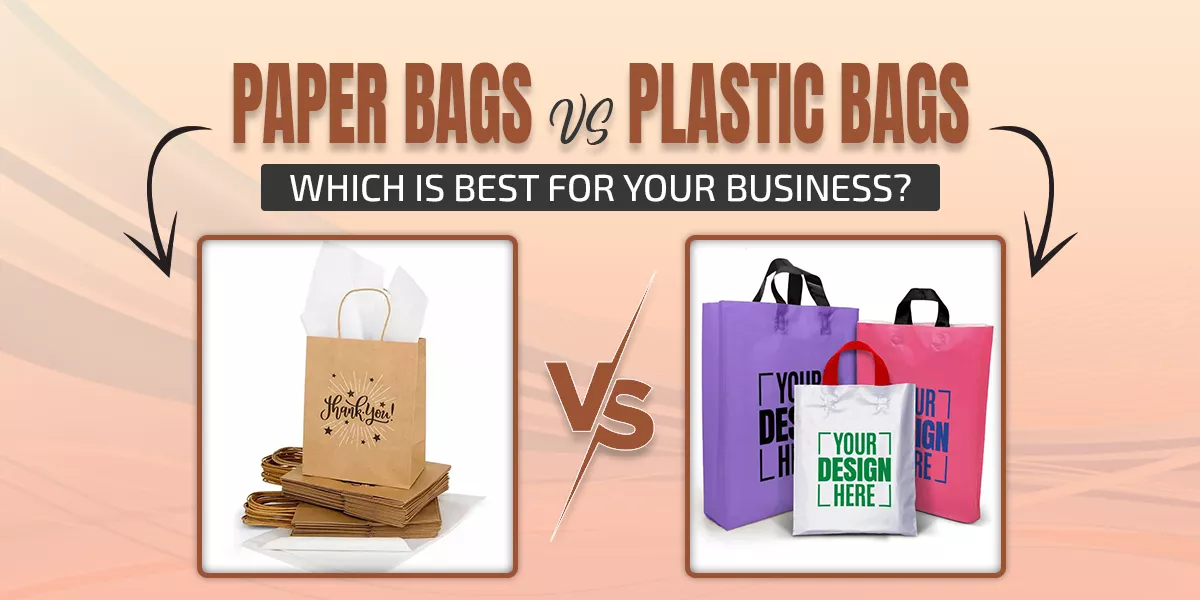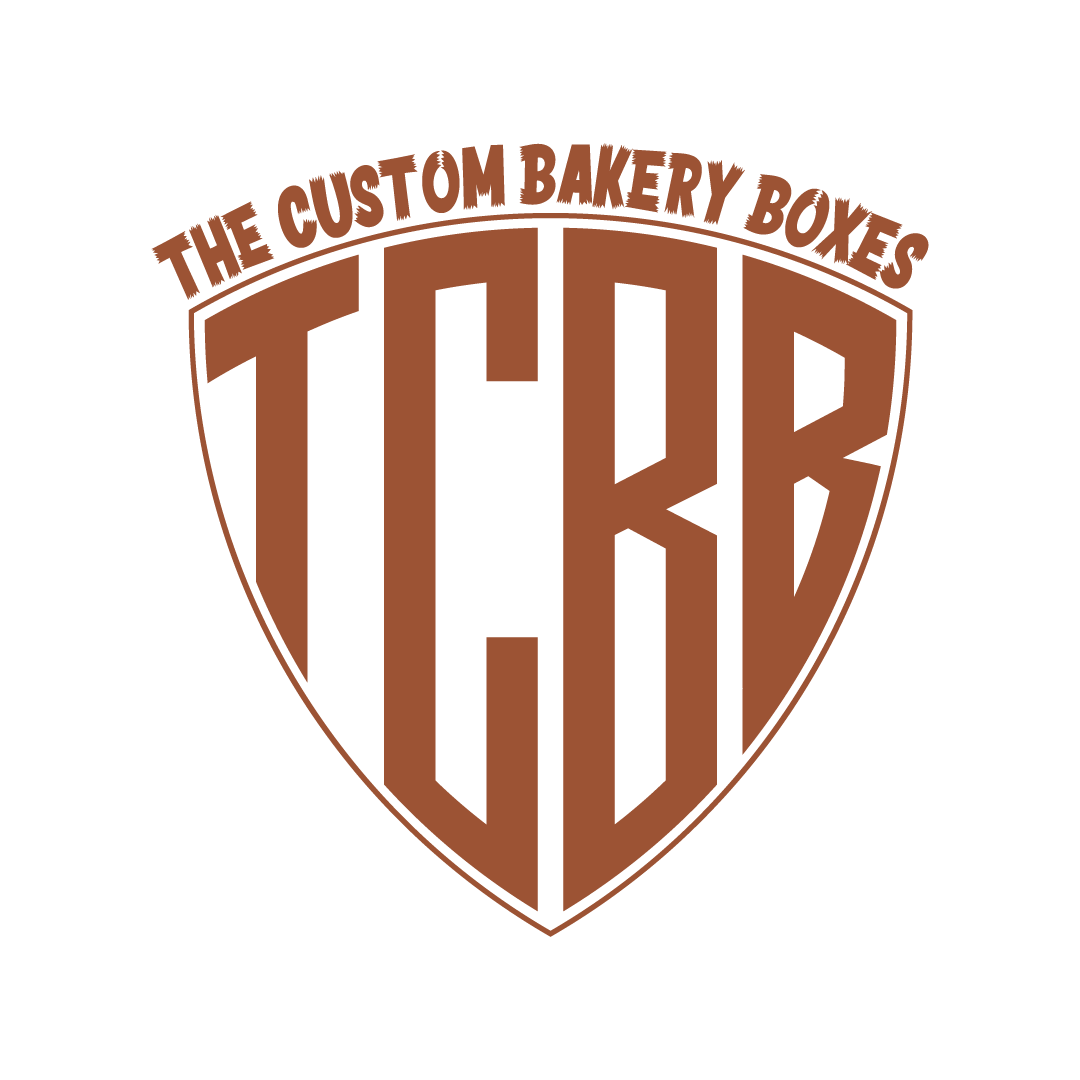If you are running a food business in the US, understanding food product labeling and EPR packaging laws is important. Food labeling helps customers know everything about the food items they purchase. Meanwhile, EPR (Extended Producer Responsibility) packaging laws make producers responsible for their packaging from start to finish. To help you get a better understanding, here’s a complete guide to food product labeling and packaging laws USA!
The Basics Labels Requirements for Food Packaging
To sell any type of food items, you must follow food labeling requirements.
So, let’s know the basics!
Principal Display Panel (PDP)
The Principal Display Panel (PDP) is basically the part of your food packaging that will be most visible to customers at the time of purchase.
On this part, you must include information, such as your product’s name and net quantity.
Information Panel
The information panel is typically located immediately to the right of the PDP.
What should you include here?
1. Nutrition Labeling
The Nutrition Facts label helps customers to make informed dietary choices.
As of 2024, the updated Nutrition Facts label includes:
- Serving Size: It should be based on amounts people typically consume
- Calories: It should help customers manage their intake
- Nutrient Information
- Daily Value Percentage: Indicates how much a nutrient in a serving contributes to a daily diet
2. Ingredient Labeling
All types of food products must provide a comprehensive list of ingredients. Accordingly, there’s a specific way to provide ingredient labels.
- Order of Precedence: You must list all the ingredients in descending order by weight
- Common Names: Use common or usual names of ingredients
- Sub-Ingredients: Disclose is any of your ingredient contains multiple components
3. Allergen Labeling
The Food Allergen Labeling and Consumer Protection Act (FALCPA) has established the standards for allergen labelling on food packaging.
What are they?
- Major Allergens
Major allergens are included milk, eggs, fish, shellfish, tree nuts, peanuts, wheat, and soybeans
- Clear Identification
You must clearly identify the allergens either within the ingredient list or in a separate “Contains” statement.
4. Special Labeling Claims
If you offer food items with specific health or nutrient claims, you must comply with stringent regulations.
For example:
- Nutrient Content Claims
If you mention terms like “low fat,” “high fiber,” or “reduced sodium,” you must have specific definitions to meet.
- Health Claims
In case your food substance is beneficial to reduce risk of a disease or health-related condition, it must be substantiated by scientific evidence. Plus, you should get an approval from the FDA.
5. Labeling for Specific Types of Food
- Dietary Supplements
Make sure to include the Supplement Facts label that lists all ingredients, serving size, and the amount of each ingredient per serving.
- Infant Formula
Your label must meet strict guidelines regarding nutrition information, ingredient listing, and proper usage instructions to ensure the safety of infants.
- Alcoholic Beverages
Labeling of alcoholic beverages is regulated by the Alcohol and Tobacco Tax and Trade Bureau (TTB). Your labels should include alcohol content, health warnings, and adhere to specific advertising regulations.
Overview of U.S. State Packaging EPR Laws
Whether you need personalized gable boxes or personalized cereal boxes, you must follow the regulations stated in Packaging EPR laws. The EPR (Extended Producer Responsibility) laws USA vary according to the state. However, all have common goals.
Let’s overview them!
California – Plastic Pollution Prevention and Packaging Producer Responsibility Act (SB54)
By 2032, the California’s law requires:
- All packaging to be recyclable or compostable
- 65 percent of single-use plastic packaging to be recycled
- A 25 percent reduction in plastic packaging
Eventually, this law makes the plastics industry responsible for reducing pollution. In this context, the producers must manage a program that collects and recycles or composts packaging waste.
Colorado – Producer Responsibility Program for Statewide Recycling Act (HB 22-1355)
This law, signed in June 2022, creates a statewide recycling system. The main purpose is to help in building a circular economy. In this law, producers of packaging and printed paper must fund the recycling system. This includes its operations and educational efforts. Then, the costs can be included in the prices of their products.
Maine – An Act to Support and Improve Municipal Recycling Programs to Save Taxpayer Money (LD 1541)
Maine’s law shifts the responsibility of managing packaging waste from citizens to producers. At its core, the law aims to reduce the amount of packaging waste in landfills and increase recycling. Ultimately, it encourages producers to use less packaging and make it more sustainable.
Oregon – Plastic Pollution and Recycling Modernization Act (SB 582)
Oregon’s law updates the recycling system by using local programs and producer resources. Accordingly, the law covers packaging, paper, and food service items. The goals here are to increase recycling access and reduce plastic pollution. At the same time, it aims to encourage innovation by charging more for non-recyclable products.
New Jersey – Recycled Content Law (P.L. 2021, c. 391)
New Jersey’s law sets requirements for recycled content in glass and plastic containers, bags, and other items. In addition, the law bans the sale of polystyrene packing materials. The main aim is to support recycling markets, make recycling more stable, and protect local recycling programs from cost fluctuations.
Washington – Post Consumer Recycled Content Law (70A.245)
Washington’s 2021 law requires producers to register, pay fees, and use recycled plastic in packaging. Starting January 1, 2023, this law applies to trash bags, beverage bottles, and household product bottles. Simply put, producers must label their packaging with information about the producer. Plus, Washington plans to expand its recycling law to improve waste management (SB 5154).
The Impact of EPR on the Packaging Industry
No doubt, the EPR laws significantly impact the packaging industry. The laws are significantly driving changes in design, materials, and waste management.
Have a look at some main impacts the laws have made!
- Higher Costs
Producers might have to face higher costs. However, they can offset them through reduced waste management expenses and improved sustainability.
- Innovation in eco-friendly packaging solutions
EPR laws encourage the innovation of new, eco-friendly packaging solutions.
- Increased Market Demand
Customers are increasingly demanding sustainable packaging. Accordingly, EPR laws help meet this demand.
- Regulatory Compliance
Ensuring compliance with EPR laws involves administrative and reporting requirements. However, the good thing is that it also offers opportunities to enhance sustainability.
How EPR Legislation Affects Packaging Waste Management?
As of today, EPR laws change how packaging waste is managed. How?
By shifting the responsibility from local governments to the producers.
For sure, this effort has several important effects, such as:
- More Recycling
Many packaging producers, like The Custom Bakery Boxes, are motivated to design recyclable packaging which leads to higher recycling rates.
- Minimize packaging waste
Instead of taxpayers footing the bill for waste management, producers cover these costs. As a result, it encourages them to minimize packaging waste.
- Drives more innovation
Producers are pushed to create new, eco-friendly packaging solutions.
- Customer Awareness
EPR programs often include education campaigns to teach customers about recycling. This leads to better recycling habits.
Overall, EPR laws create a more sustainable system by making producers accountable for their packaging waste.
What Are Producer Responsibilities for Packaging Waste?
Producer responsibility is central to EPR laws. This also means that producers are responsible for the environmental impact of their packaging.
Here are the main responsibilities producers have to fulfill:
- Designing sustainable packaging that is easier to recycle and has a lower environmental impact
- Paying for the costs of waste management and recycling programs
- Using recyclable materials and improving packaging recyclability
- Regularly reporting progress and ensuring adherence to state laws
In the end, when producers are taking responsibility for packaging waste, they can help to reduce environmental impact. Better yet, they can promote sustainable practices all across the US.
Packaging EPR Legislation Trends in the U.S.
Looking ahead, EPR legislation for packaging in the U.S. is expected to continue growing.
Check out some legislation trends to watch out for!
- Expansion of EPR Programs
There will be more states adopting EPR laws to expand producer responsibility.
- Harmonization of Regulations
We will see more efforts to align EPR laws across states.
- Target on Plastic Packaging
Many EPR laws will target plastic waste, promoting recyclable and biodegradable materials.
- Customers Education
We can expect more public education campaigns to boost recycling participation.
- Technological Advancements
Yes, there will be more advancements in recycling technology and sustainable materials to improve waste management and EPR compliance.
As these trends develop, EPR laws will continue to promote sustainable packaging practices and reduce environmental impact in the U.S.
In Summary
Indeed, if you are running a food business in the US, understanding food product labeling and EPR packaging laws USA is important. Hopefully, our complete guide above helps you get a better understanding. To get the right food packaging that adheres to the laws and regulations, The Custom Bakery Boxes will be your best partner!
FAQs
What is food product labeling?
Food product labeling is the practice of providing information on food packaging. The label includes the name of the food, its ingredients, nutritional facts, and other details.
What is required on a food label?
A food label typically must include:
- Product’s name
- The net quantity of the contents
- The ingredients list
- Allergen information
- The name and address of the manufacturer, packer, or distributor
- A nutrition facts
- A use-by or expiration date (if applicable)
What is required on nutrition labels?
Nutrition labels must provide:
- Serving Size
- Calories
- Nutrient Information
- Daily Value Percentage
What are the 5 labels of food products?
The five common types of labels you might see on food products are:
- Nutrition Facts Label
- Ingredient List
- Allergen Information
- Expiration Date
- Claims
What are the 5 food label requirements?
The 5 food label requirements are included:
- The name of the product
- Nutrition Facts Chart
- List of Ingredients
- English Language
- Avoid Inappropriate Claims
What are the basic food labeling requirements?
When it comes to food labeling requirements in US, you must include:
- Common Name of the Food
- Net Quantity of Contents
- Ingredient List
- Manufacturer Information
- Nutrition Facts Panel

